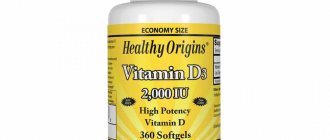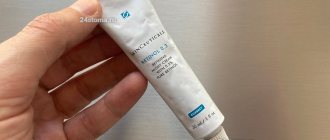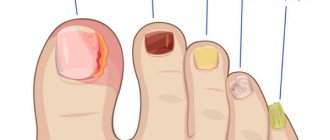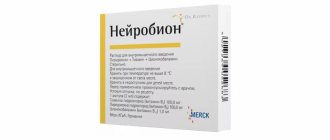The history of zinc use dates back thousands of years. Thus, the aesculapians of the ancient world, five thousand years ago, very actively used an ointment prepared on the basis of this component to treat various kinds of skin diseases and to speed up the healing process of wounds. Nevertheless, scientists became seriously interested in the properties of zinc and its role in biological processes only in the mid-twentieth century, when it was accidentally discovered that in burned rats, the wounds healed an order of magnitude faster if a small amount of this mineral was added to their daily diet.
Symptoms
In case of zinc poisoning, the following symptoms appear when it is absorbed in food and drinks:
- decreased protective capacity of the immune system;
- damage to the gastric mucosa;
- nausea;
- breathing problems;
- vomit.
Most of these symptoms appear quickly, but problems with the immune system may become noticeable only after some time.
Symptoms of zinc oxide poisoning from inhalation of this mixture:
- drowsiness;
- chills;
- suffocation;
- feeling of pressing pain in the chest area;
- cough (dry).
But the first symptoms are a sweetish taste in the mouth and thirst
.
If the body has been poisoned by salt compounds that contain zinc, then the sweetish taste is replaced by a metallic one, diarrhea, nausea, and a more extensive burn of the mucous membrane of the digestive system are observed; blood glucose levels and blood pressure change. Cramps in the legs, more precisely, in the calf muscles, and abdominal pain also begin.
With a chronic excess of zinc, there is a significant deterioration in the functioning of the immune system, including the occurrence of a number of autoimmune diseases. In case of chronic excess of zinc, weak nails and hair are observed, and the condition of the skin worsens. The pancreas, liver and prostate gland are subject to degenerative processes.
ADHD (zinc deficiency and copper excess)
Minerals are inorganic substances necessary for cell metabolism, synthesis, growth and formation of neurotransmitters. Essential minerals such as magnesium should be consumed in larger quantities than micronutrients such as copper and zinc, although both types are critical to many body functions. Our bodies cannot synthesize minerals, so they must be obtained through food or supplements. Mineral deficiency is usually observed in patients suffering from mental disorders.
Lead
Children with the highest blood lead levels are four times more likely to develop ADHD than children with the lowest blood lead levels.
A 2021 study examining the relationship between lead exposure and hyperactivity and impulsivity in children found that these children had a mutation in a gene that regulates iron absorption and modulates lead metabolism. Brain scans of participants in the Cincinnati Lead Study found that childhood lead exposure was associated with loss of brain volume in adulthood. People with higher blood lead levels had less gray matter in some areas of the brain. However, multiple studies have shown that lead levels <5 μg/dL are still associated with symptoms of inattention and hyperactivity and learning difficulties. The risk of ADHD symptoms increases with elevated blood lead levels, even at low concentrations. Children with blood lead levels >2.17 μg/dL had a 55% greater risk of developing ADHD compared to children with blood lead levels <2.17 μg/dL.
Copper
Excess copper creates excess dopamine, which leads to excess of the neurotransmitter norepinephrine. High levels of these neurotransmitters lead to symptoms similar to those of ADHD: hyperactivity, impulsivity, agitation, irritability and aggressiveness. Excess copper can cause oxidative stress and cause symptoms such as hyperactivity and irritability. In children with excess copper, stimulant medications are not effective and may cause side effects such as agitation, restlessness, and changes in sleep and appetite. Most ADHD medications work by increasing dopamine levels, increasing the effects of excess copper. Imbalances in copper and neurotransmitter levels cause emotional, mental disorders such as depression and anxiety.
Zinc
Excess copper in the presence of zinc deficiency can be especially harmful for children with ADHD. Zinc is another essential trace mineral that is considered a vital component of the central nervous system and neurotransmitter synthesis. Zinc is involved in more than 300 enzymatic reactions in the body to support normal growth and development.
Zinc is necessary for the synthesis of several neurotransmitters, including dopamine, norepinephrine and serotonin, and enhances the effect of gamma-aminobutyric acid, one of the main inhibitory neurotransmitters. Numerous studies have confirmed that not only are zinc levels lower in children with ADHD, but the degree of zinc deficiency is inversely correlated with the severity of symptoms in children with ADHD. Those children with lower levels of zinc in their hair had worse scores on hyperactivity, inattention, oppositional behavior, and impulsivity. Low plasma zinc levels negatively affect the brain's processing of information. Zinc supplements reduce ADHD symptoms more than placebo and increase the effectiveness of stimulants.
In one study, children received zinc glycinate 15-30 mg/day or placebo. For two weeks, all children were given amphetamine 5-15 mg/day. Over the next three weeks, the children continued taking zinc or placebo while the amphetamine was titrated. Children given zinc had better results on neuropsychological tests, especially tests of impulsivity. The optimal weight-adjusted dose of amphetamine in mg/kg/day with zinc was 37% lower than with placebo. Likewise, the optimal absolute dose of amphetamine in mg/day with zinc was 43% lower than with placebo (Arnold et al., 2011).
Sources of Selenium - Important Prerequisites for Taking Selenium Supplements
- Large amounts of selenium are found in meat and offal, fish and crustaceans, grains and dairy products, chocolate and fruits.
- Garlic, onions, dry legume seeds, broccoli, white cabbage and asparagus are rich in this mineral.
- Nuts and mushrooms are also good sources of selenium.
Selenium is best absorbed together with protein and vitamins A, C, E. The absorption of the element increases with its deficiency in the body. High levels of sulfur and heavy metals in food reduce its absorption.
You can compensate for selenium deficiency in the body by eating foods rich in this element or using medications from the pharmacy. In case of excess, it is recommended to include foods with reduced selenium content in the menu and stop taking supplements.
We must not forget that adding any elements or vitamins cannot replace a healthy and balanced diet and should not be done without consulting a doctor. In some cases, selenium supplementation may be required in appropriate doses. However, before you start taking it, you should check the level of selenium in the blood, because its excess leads to side effects, and the difference between a therapeutic and a toxic dose is small.
Where to get zinc?
Zinc is found in common foods: meat, poultry, hard cheese, cereals, beans, chickpeas, peas. The highest zinc content is in shrimp. However, it is quite difficult to quickly compensate for the lack of zinc and obtain its daily requirement (15 mg) from food. The fact is that zinc is absorbed very poorly from plant products, and from animal products the human body absorbs only 20–40% of the zinc they contain.
Therefore, if a man has a zinc deficiency, then the optimal solution is to take vitamins with zinc for men. For example, the complex for increasing male fertility Speroton (more information about the product can be found here) contains zinc in the amount of 21 mg (140%), which allows both to eliminate the deficiency of this substance and to fully provide the body with this important microelement.
THIS IS NOT AN ADVERTISING. THE MATERIAL WAS PREPARED WITH THE PARTICIPATION OF EXPERTS.
Causes of selenium deficiency
The level of selenium in food depends greatly on its content in the environment: soil and water. In areas where the soil is poor in selenium, deficiency is more common in people. The classic example is China. But the selenium content in the soil in Poland and other European countries is also low, so the amount of selenium in the diet may not be enough.
Selenium deficiency can also be caused by an improperly balanced, heterogeneous and unhealthy menu. Malnutrition, bowel disease, kidney or liver failure, and cancer can all contribute to selenium deficiency in the body.
Vitamin C
Almost every person has been familiar with ascorbic acid (another name for vitamin C) since childhood. It is usually used to prevent colds and strengthen the immune system. Vitamin C is a water-soluble vitamin that cannot be synthesized independently in the body.
This organic substance is found in many foods, such as citrus fruits, various types of cabbage, broccoli, bell peppers and even potatoes. However, not always a sufficient amount of the vitamin comes from food, so it is also consumed in the form of tablets, capsules and syrups.
Vitamin complexes and medicines with vitamin C:
- Vitamin C 500;
- Superia Vitamin C;
- Doppelhertz Active Vitamin C MAX;
- Laferoflu vitamin C;
- Hyaluron-Filler vitamin C.
Vitamin C: the benefits of a popular vitamin
Vitamin C enhances the immune response to pathogens that enter the body. After taking ascorbic acid, more interferons are produced, special proteins that are produced in response to the penetration of a virus or bacteria. Lymphocytes (cells of the immune system) begin to actively move through the blood and thus reach the problem area faster.
The vitamin in question also neutralizes free radicals that destroy cells and accelerate the aging process, resulting in reduced oxidative stress.
During a cold, vitamin C levels can drop sharply because most of it is used to boost immune responses. Therefore, during colds and for their prevention, it is recommended to use this organic substance. In addition, vitamin C promotes healthy bones, muscles and blood vessels.
Daily value of vitamin C
The amount of ascorbic acid that can be taken per day should not exceed the following:
- children under 3 years old - 5 mg;
- children 4-8 years old - 25 mg;
- adolescents from 9 to 13 years old - 45 mg;
- adolescents 14-18 years old - 65-75 mg;
- adults over 19 years of age: men 75 mg, women 90 mg;
- pregnant women - 85 mg;
- women breastfeeding - 120 mg.
The maximum daily dose is 2000 mg. If you take more, you may experience an overdose of vitamin C, which will provoke a number of negative consequences.
Vitamin C overdose
Abuse of any product always entails negative consequences. As for ascorbic acid, if you drink more than 2000 mg of it, the following side effects may occur:
- stomach upset;
- dizziness and headache;
- insomnia and problems with sleep quality;
- stomach pain;
- nausea and vomiting;
- spasms of various parts of the body.
If a person has the congenital disease hemochromatosis, then consuming excess amounts of vitamin C can lead to unsafe health consequences. With this pathology, too much iron accumulates in the body and taking ascorbic acid can provoke arthritis, cirrhosis of the liver and the formation of stones in the kidneys and bladder.
Interaction with other substances and drugs
Protease inhibitors . Using vitamin C together with these medications reduces the effectiveness of the latter.
Aluminum . Ascorbic acid accelerates the process of absorption of aluminum from medicines that contain it. Taking them together is unsafe for people with kidney problems.
Nicotinic acid (statins and niacin) . If you take these drugs at the same time as a vitamin, this will lead to a decrease in the effectiveness of niacin and statins.
Warfarin. It is an anticoagulant that prevents the formation of blood clots and reduces blood clotting. Ascorbic acid may reduce its effectiveness.
Oral contraceptives . Taking vitamin C together with hormonal therapy leads to an increase in estrogen levels.
References
- Titz, N.U. Encyclopedia of Clinical Laboratory Tests. - M.: Labinform, 1997. - P. 318-321.
- Severin, E.S., Aleynikova, T.L., Osipov, E.V. and others. Biological chemistry. - M.: Medical Information Agency LLC, 2008. - 364 p.
- Guyton, A., Hall, J. Medical physiology / ed. IN AND. Kobrina. - M.: Logosphere, 2008. - 1296 p.
- Salnikova E.V. Zinc is an essential element (review). Bulletin of OGU, 2012. - T. 146. - No. 10. P. 170–172.
- Rabinovich, D., Smadi, Y. Zinc. StatPearls, 2021.
- Dhaher, S., Yacoub, A., Jacob, A. Estimation of Zinc and Iron Levels in the Serum and Hair of Women with Androgenetic Alopecia: Case-control Study. Indian J Dermatol., 2021. - Vol. 63(5). — P. 369-374.
- Han, T., Lee, J., Kim, Y. Hair Zinc Level Analysis and Correlative Micronutrients in Children Presenting with Malnutrition and Poor Growth. Pediatr Gastroenterol Hepatol Nutr., 2021. - Vol. 19(4). — P. 259-268.
Treatment
In case of acute and chronic excess of zinc, it is important to provide medical assistance to the person. Therapy is mainly aimed at eliminating the symptoms of excess zinc. It is advisable to carry out treatment in a hospital setting.
Unithiol is used as an antidote. The doctor may also prescribe sodium thiosulfate, acetylsalicylic acid, expectorants, bronchodilators, and penicillamine. It is also recommended to stop taking zinc-containing drugs and using zinc utensils.
If a metallic taste appears in the mouth, as well as a sharp increase in body temperature after contact with zinc vapor, you must call emergency medical attention.
As for chronic forms of zinc excess, prevention plays an important role.
What are the dangers of insufficient zinc intake in the body?
Zinc deficiency can be caused by excessive intake of salts and esters of phosphoric acids (phosphates), taking oral contraceptives, diuretics, immunosuppressive medications, as well as abuse of alcoholic beverages.
The most characteristic symptom reflecting zinc deficiency is growth retardation. Other manifestations include: distortion of taste perception, disruption of metabolic processes, decreased protective properties of the body, development of complications of other diseases (for example, cirrhosis of the liver or disorders affecting the cardiovascular system), impaired sexual function, delayed puberty.
Internal changes are also complemented by external symptoms: hair loss, loss of appetite, development of dermatitis, night blindness.







